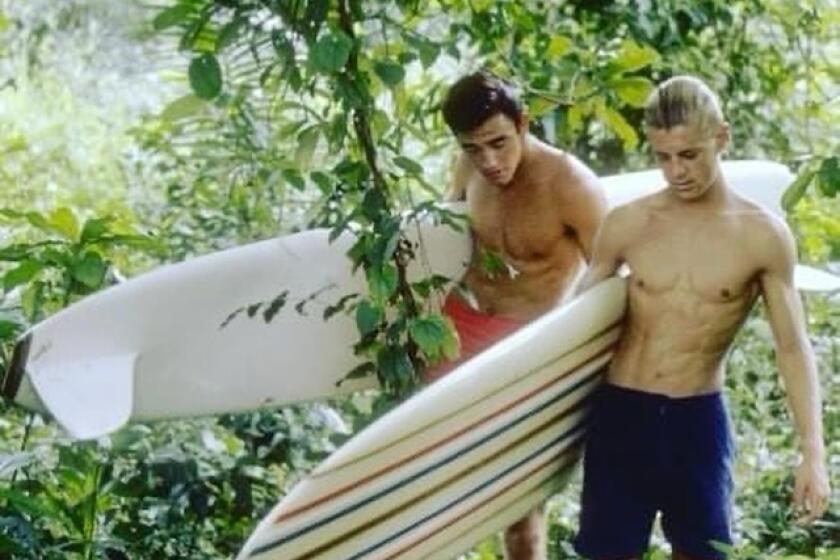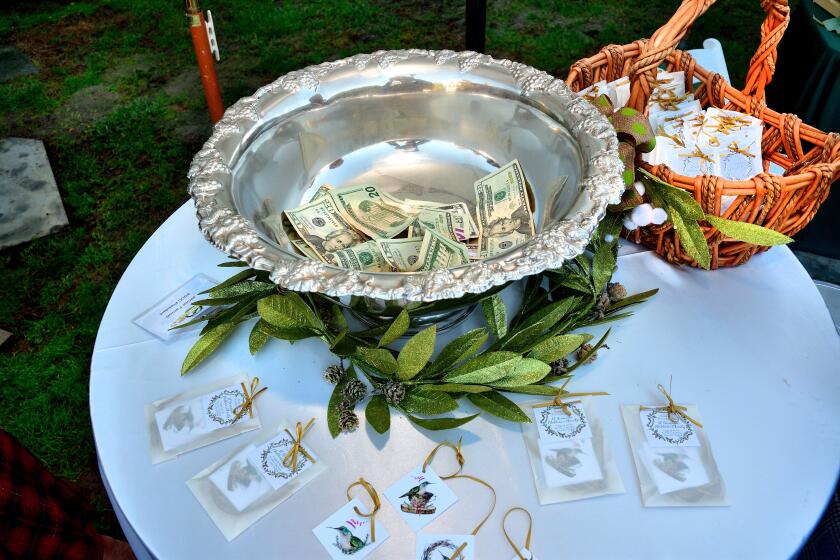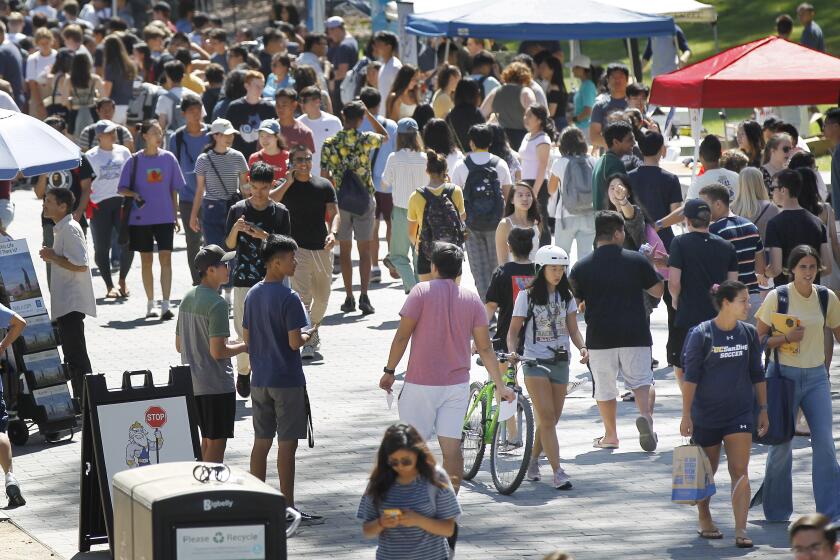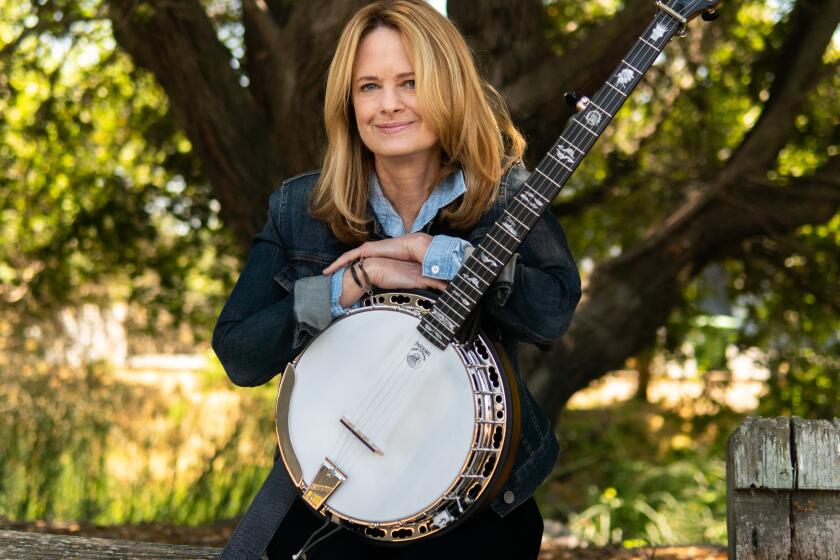Faux Finish: Scripps Institution of Oceanography students plant ‘coral reef garden’ to grow awareness in La Jolla
When classmates Brant Chlebowski and Nina Rosen were students in the Master of Advanced Studies degree in Marine Biodiversity and Conservation program at Scripps Institution of Oceanography (SIO), their daily respite from the labs and fluorescent-lit offices would be to sit outside the Eckart Library for some sun and fresh air. But around them, the grounds were covered with mulch, shrubs and some sickly trees.
Couple that with their interest in giving the world’s coral reefs — and the issues they face — some much-needed attention, and the idea for the Coral Reef Garden project was born. Fronting 8755 Biological Grade on the SIO campus, the garden project was fully planted over the summer and uses succulents, cactus, rocks and sand to replicate the appearance of a coral reef.
The two scientists have since graduated, and are now working as lab assistants, and continue to make this garden a lasting reality.
“We both have experience diving, so we have this working knowledge of what coral reefs look like,” Rosen said. “We know that cactus and succulents are water-wise plants, but we also realized so many of them look like coral species. That’s what fueled this whole idea: to make it a living exhibit to inspire coral reef curiosity as a science communications exhibit to bring the science outside of the labs as the public walks by.”
She added that most people have heard of the environmental challenges coral reefs face — bleaching, ocean acidification and overfishing of species that eat the algae on reefs — but don’t know there is something they can do about it.
“One thing the scientists here have been learning, as they study these struggles, is that local efforts can have a huge effect on the resilience of a coral reef. That is something positive,” Rosen said.
Because La Jollans live closer to a kelp forest than a coral reef, Chlebowski added: “(This project) highlights an environment that may seem far away to us to raise awareness. Seeing it, causes you to think about it, and gets people communicating about this.”
To that end, starting in October 2016, they reached out to scientists at two Scripps coral reef labs (the Smith and Sandin labs), to find succulent species that resemble coral and that would survive in the coastal environment.
Chlebowski said the topography is zoned so that the upper part (at the northernmost section) represents shallow water under breaking waves, with more rocks and fewer plants; leading to the transition zone, marked by sand channels and general characteristics of a reef, including larger plants; and the lagoon, which would be on the protected side of breaking waves and feature smaller, more delicate plants and smaller rocks.
“We wanted to cluster plants in and around the rocks so it’s easier to imagine they are like coral with organisms growing on and around them. We want the ‘reef’ to grow around itself,” he said.
Some examples include Myrtillocactus geometrizans cristata, which has a genetic mutation that causes it to fold over itself like some common coral; and other cactus species that have blooms that look like sea stars, and another that looks like a sprawling octopus.
To find the plants, Chlebowski and Rosen were connected with Terry Parr, a SIO graduate and owner of C&T Plants. To install them, the university allowed the use of groundskeepers, and the planting took about a month, spanning March to April.
The final pricetag has not been announced, as SIO is covering the cost because the project meets the terms of its master campus plan to reduce water usage, provide educational opportunities and improve pedestrian use.
“This site is along the California Coastal Trail and heads back toward the coast immediately across the way, so the SIO Master Building Plan includes making this more of a pedestrian path, and in doing so, making educational nodes along the whole trail,” Chlebowski said. “There is one node at the upper entrance of campus, and this is the next node. Because there was an educational component, this project aligned with the plans we didn’t even know existed and we were allowed to use the budget set aside for that plan.”
The next phase is the educational signage that will be posted, which should be in place by the time school resumes in the fall. “We have two signs so far — one focusing on ecological parallels between coral and cactus, and how both species adapt to living in challenging environments; and the other on the science behind the garden,” Rosen said.
Other additions may be signs showing where pedestrian access is allowed, sounds (the clicks, pops and snaps you might hear under water), light features that replicate water, and the use of 3-D models of the garden to visually track its growth, emulating the technology used to track the growth of coral reefs.
Because the building behind the garden is undergoing some renovations, there has not been a formal unveiling. Nevertheless, Rosen’s enthusiasm for the project is palpable.
“This is my new happy place,” she said. “I work in the lab most of my day and sometimes I hit these huge writer’s blocks and I come down here, sit on the bench. I can be Zen and let my creativity flow. It’s so much more inviting a space now. I’m overjoyed with how it turned out.”
Donors who wish to contribute to the garden may contact the Scripps Development Office at scripps.ucsd.edu/giving/contact-us
Get the La Jolla Light weekly in your inbox
News, features and sports about La Jolla, every Thursday for free
You may occasionally receive promotional content from the La Jolla Light.




